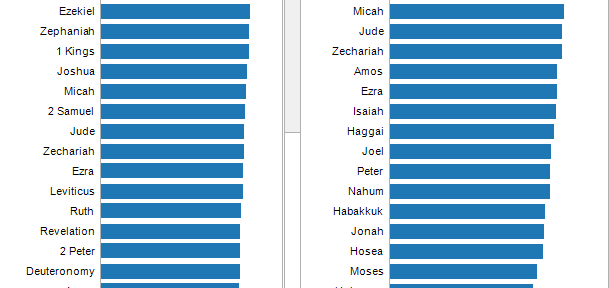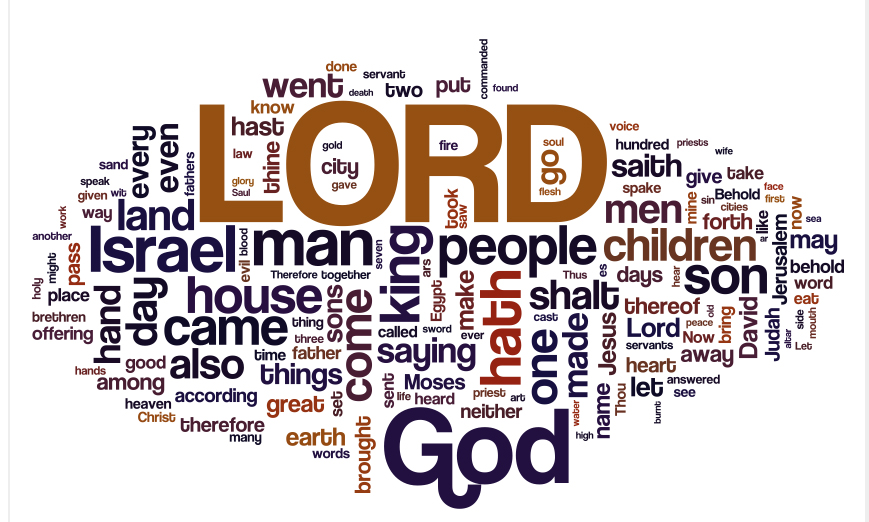Some men have taken dark oaths that are leading the world into self-destruction. In this technological era we’re living in, what will happen to human spirituality? What will become of us? Will we be able to find the answers before it is too late? Find some answers here.
Author: Peter Wilson
Let me share a story about how God orchestrates events in our lives to accomplish his will and help us find our calling. I started this blog not long after moving to a new department in my company. The road I’ve been speeding down since then is worth describing.
My first attempt at getting the transfer failed. Another engineer who hired on at our location shortly after me got it instead. Later on, I discovered that the divine plan was better than my own. A few months after that first interview, another job in the same department came available, but this one was far better suited to my skills and one which I knew would be much more interesting to me. It would involve a great deal of database manipulation for reporting, analysis, and whatever else might need to be done with our computer systems that I could help with.
Around that same time frame, I was envisioning a draft concept for a bible search/study tool that I have coined “MetaV.” All I had was the idea and an illegible sketch. I was certain that I’d have to invest in some new tools and steadily, patiently learn some new programming language to make it work with the database I had begun building. That all changed when I swapped jobs and began learning about newer ways to gather, compute, analyze, and visualize data.
Nearly every month I have learned of new tools and techniques which help me take leaps forward in various projects for this site and at work. Many times I just “happen” to discover them. As one who believes in God’s omnipotence rather than luck, I can see how he uses things like this in “secular” circumstances to teach us and mold us spiritually. There is really no difference between our work lives and spiritual lives. God is everywhere, in control of everything and every part of our day.
The field collectively known as Business Intelligence includes players like SAP (Crystal Reports), IBM Cognos, and of course Microsoft (plus many others). Then, along comes Tableau. It turns out that the people that make the most annoying Facebook games collect and analyze user data in ways you wouldn’t believe – and they use Tableau to do it. I thought: what if I could use that to analyze scripture? What if we applied business intelligence tools to find biblical wisdom?
Now, don’t get me wrong – only the Holy Spirit can truly bring understanding of his words. But, having a tool that provides a view of scripture you’ve never seen before can be a big help in beginning that process. I am happy to report that Tableau does have a free version of their software for use with public data that I have begun applying to MetaV. Thanks to the awareness of new tools gained through my new job duties, I am using weeks-old technology to create things like readability graphics without having to learn any special programming or making any investment other than time.
With a little more of that investment, an integrated view of the entire Bible with a map, timeline, and details about each verse in a single interactive view is not that far away. Had I gotten the job I originally went for, I don’t know that I’d be this far along in the process. I don’t know that I would have found the tools to help me do the things that I believe God has equipped and called me to do. I do know that his timing and his plans are perfect. When that time is right, readers of this blog will be the first to discover an entirely new approach to bible study.
Is it true that an “antichrist agenda” dominates the mindset of those who run the Hollywood media machine? Journey with us as we explore the dark recesses of the entertainment industry and pull back the curtain on the most powerful mind-shaping institution in the world.
This high-quality, visually engaging presentation by Mark Spence, the Dean of the School of Biblical Evangelism, gives clear reasons why the Bible can be trusted as inerrant, inspired, and infallible.
The Bitter Cup abounds with compelling testimonies by missionaries of the younger generation. Their dedication, suffering, faithfulness, and thanksgiving have led to an unprecedented revival of the Chinese Christian church.
Like anyone who has been effective at spreading their message, “Dr. Dino” is not without his critics. Here he defends against the onslaught that has come at him over the years and teaches us a few more things in the process.
If our universe and life on Earth didn’t evolve through natural forces, what did happen? Kent Hovind explains the Bible’s historical account and backs up his faith with sound reason.
The teaching of evolution carries moral implications. It draws people away from the knowledge of their creator. The results throughout history have been devastating.
Did you know that modern science textbooks present known frauds as scientific truth? Creation Science Evangelism exposes these deceptions and calls for their removal.
Creation Seminar 3 – Dinosaurs
There’s a reason they call him “Dr. Dino” – he loves telling people about the wonderful creatures we now call dinosaurs. Watch him teach about where they fit in Earth’s history and where you can find them in the Bible.
Kent Hovind explains the biblical account of humanity’s beginnings and answers common objections to this history.
Atheistic scientists inform us that the Earth is over 4.5 billion years old. Kent Hovind, a.k.a. “Dr. Dino” presents both the other side of the story and the actual scientific facts.

There are numerous claims about the readability of various English Bible translations. The chart below is the result of my own calculations using the standard Flesch-Kincaid grade level formula. Many other readability calculations do not specify whether sentence lengths are based on punctuation or verse divisions. This tool allows you to see it either way. In some sections, the results are wildly different.
This tool also makes it easy to find readability levels for each author, book and chapter (on the advanced tab), unlike the more general readability comparisons you may have seen already. Due to copyright restrictions, it is difficult to obtain electronic versions of the entire text of translations other than the KJV, so at the moment we do not have a simple tool available for comparing readability accross different versions.
(chart may take a moment to load)
Review: RefTagger vs. VerseClick
For novice bloggers and advanced web programmers, there are two good tools available to automatically create a pop-up showing the text of Bible verses referenced on your site, as in: Rom 1:20. One is RefTagger from Logos Bible Software. The other is VerseClick, recently made available at AV1611.com. If you are interested in using a tool like this, here are some things to consider.
UPDATE: after writing this review, I learned of the BLB ScriptTagger from the Blue Letter Bible website. It is well worth considering along with the two mentioned here.
RefTagger
Highly customizable: If you know some basic web concepts like CSS, you can match the styles in the pop-up window to your own site theme. There is an optional toolbox to allow visitors to choose their preferred translation or web developers can choose the default version using the simple setup form. There are many other options shown on the RefTagger website.
Works with most syntax: There are all kinds of ways to reference Bible verses, making it difficult for a computer to properly recognize them. RefTagger works with most common syntax and it also works with some developing web standards such as BibleRef markup.
Integrates with Logos Software: Next to each verse link, you’ll see an icon that takes the user to that verse within Logos Bible Software, provided the user has this software on their computer. To me, this is an unnecessary distraction. Few users are likely to want this feature and it adds a button that gets in the way of the normal flow of reading. It undermines the very purpose of the tool: to provide a seamless way to look up verses referenced without distracting the reader with a quote box or going to another resource in the middle of a paragraph. UPDATE: I am told that this feature is optional (see comments), but it is enabled by default and may be difficult for the average blogger to disable.
Performance and Simplicity: It is quite simple to install this tool on any site. Just pick a few options and paste a line of code in the appropriate place. Unfortunately, its host of options slows down page loading. While it performs adequately in most cases, it could be much better in my opinion.
VerseClick
Not customizable: Perhaps later versions will allow for some options regarding colors and fonts, but right now you’re stuck with a brownish-yellow background on the pop-ups. That said, the lack of custom parameters makes VerseClick perform much better in general than RefTagger (based on my experience – I don’t have the resources to do scientific benchmarking). Furthermore, it does not advance the proliferation of corrupt Bible versions so overall I view this as a “plus.”
Works with most syntax: Like RefTagger, most reference methods are supported. It doesn’t recognize BibleRef markup, which is how RefTagger recognizes whole-chapter tags. VerseClick takes you to the whole chapter when a verse is clicked and since both tools limit pop-ups to just a few verses, this becomes a moot point.
Performance and Simplicity: As mentioned, I have found VerseClick to perform better overall than RefTagger. It is just as simple to install and use: one line of code to cut-and-paste.
If you aren’t using either of these on your Christian website, I highly recommend adding this functionality for your visitors. It puts Scripture at their fingertips within whatever point the author is making. I use VerseClick for its use of only the time-tested KJV which ensures the verse shown is an accurate and complete translation, as well as for its superior download performance and absence of the distracting Logos button. The color styles of VerseClick happen to match the ones used on SoulLiberty.com, but if you find the yellow clashes with your design, I’d recommend e-mailing the creator to request the option to customize the CSS.
Playing with word clouds

A lot of bloggers are using word clouds for various features now, mainly to make common post tags stand out. I happen to think it’s a fad. Like Microsoft’s WordArt, it can do some nifty things but doesn’t really rise to the level of artwork that would be required for a valuable design aesthetic.
That said, it can be fun to play around with these ideas to see just how far you can go or perhaps lead to a better idea later. In that spirit, I present to you my word cloud made using Wordle and the text of the KJV (with words like thee, thou, ye, etc. removed).
